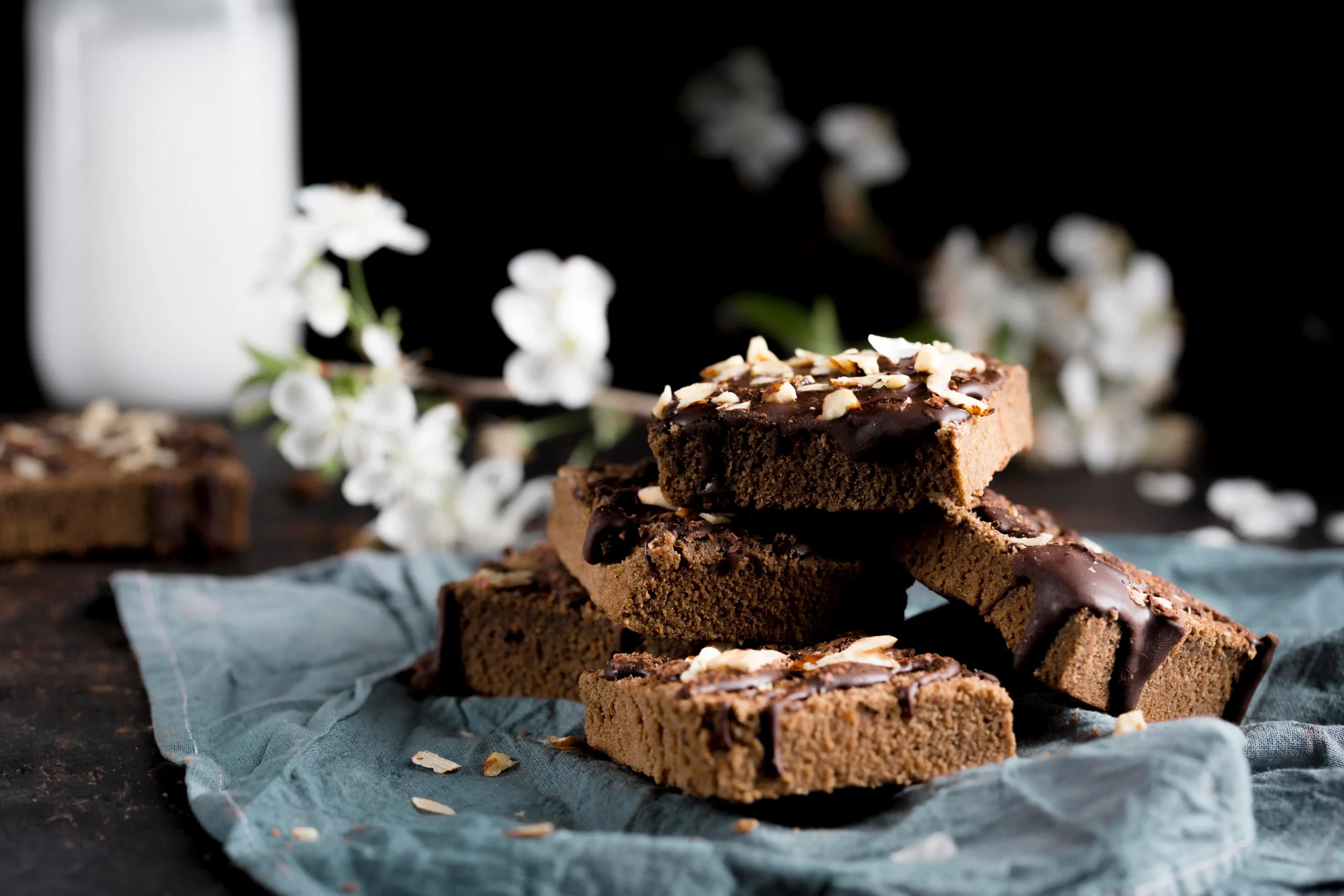Introduction to Almond Flour Brownie Recipe
Almond Flour Brownie Recipe is the perfect guilt-free indulgence for anyone craving a rich, chocolatey treat without the gluten. This almond flour brownie recipe delivers a moist, fudgy texture with a subtle nutty flavor that sets it apart from traditional brownies. Packed with the natural goodness of almonds, it’s a go-to dessert for health-conscious bakers, gluten-free diets, and anyone who wants a better-for-you way to satisfy a sweet tooth. Whether you’re baking for family or prepping a healthy snack, this almond flour brownie recipe is a crowd-pleaser every time.
Table Of Contents
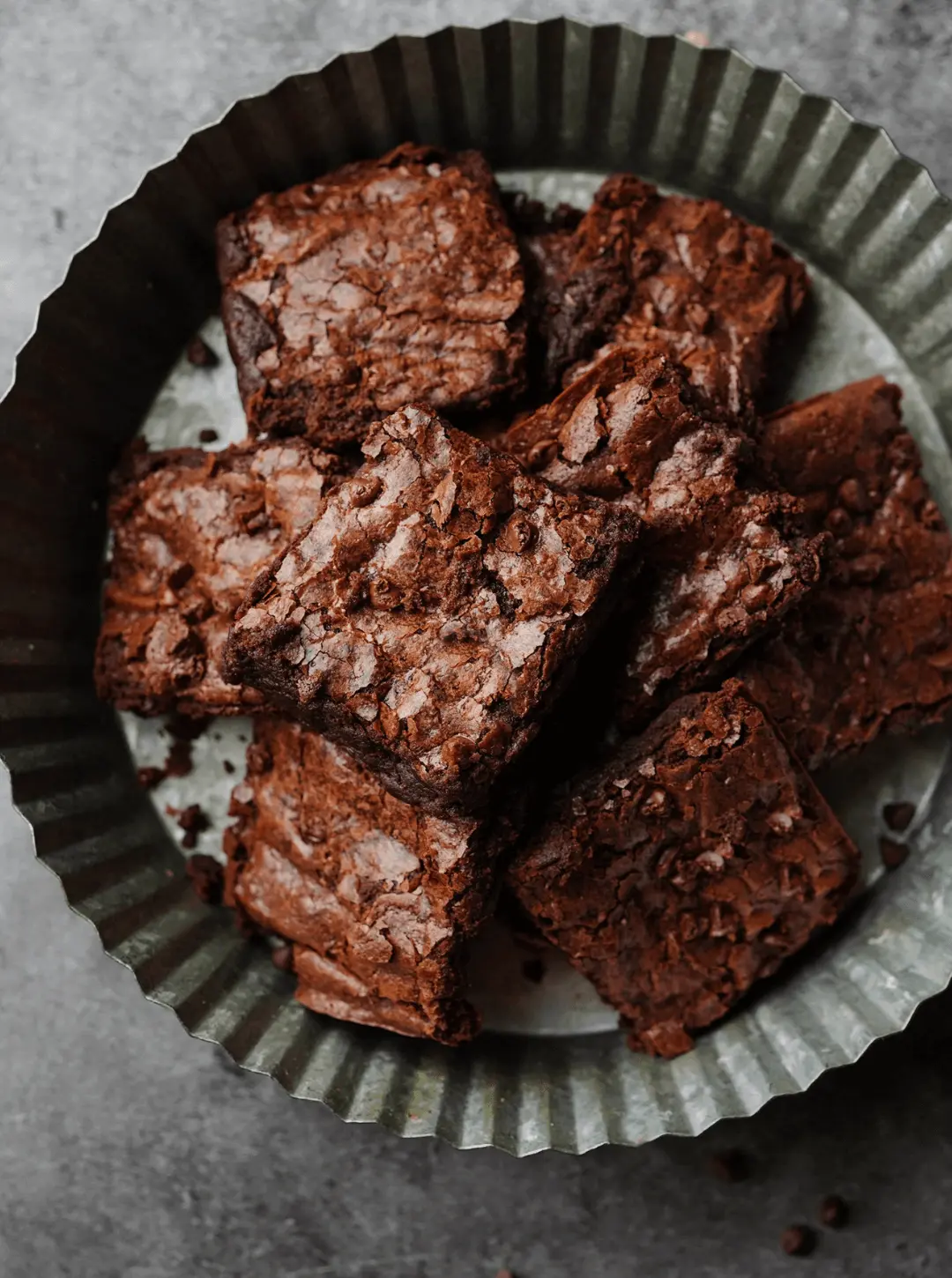
What Makes Almond Flour Brownie Recipe Unique?
Almond flour brownie recipe is made from finely ground blanched almonds, giving them a light, airy texture that sets them apart from traditional wheat flour. Unlike wheat flour, almond flour is naturally gluten-free, rich in healthy fats and proteins. Its subtle sweetness and nutty flavor make it ideal for both savory and sweet recipes.
Benefits of the Almond Flour
- Nutrient Boost: Almond flour provides vitamin E, magnesium, and heart-healthy fats, making it a nutritious addition.
- Perfect Texture: Its moisture content contributes to soft, fudgy brownies.
- Low Carb: Ideal for those following keto or low-carb diets, almond flour has fewer carbs than traditional flour.
Why Choose Almond Flour Brownie Recipe for Baking?
Nutritional Benefits That Go Beyond Flavor
Choosing an almond flour brownie recipe isn’t just about indulging in something sweet—it’s a smart decision for your health. Almond flour is rich in essential nutrients like vitamin E, magnesium, and healthy fats that support heart health and brain function. Each bite of an almond flour brownie delivers a solid dose of plant-based protein and dietary fiber, helping you feel satisfied longer while avoiding empty calories.
One of the most compelling reasons to go with an almond flour brownie recipe is its low glycemic index. Unlike traditional wheat flour, almond flour won’t spike your blood sugar levels, making it an excellent choice for those managing diabetes or following low-carb lifestyles like keto or paleo. With its naturally sweet undertones, almond flour reduces the need for added sugar—helping you create healthier desserts without sacrificing flavor.
Gluten-Free Advantages for Sensitive Diets
If you’re living gluten-free, an almond flour brownie recipe offers a worry-free way to enjoy dessert. Almond flour is naturally free from gluten, making it ideal for people with celiac disease, gluten sensitivity, or wheat allergies. Unlike many gluten-free flours that require additives like xanthan gum or guar gum for structure, almond flour stands strong on its own.
By baking with an almond flour brownie recipe, you eliminate the guesswork. The brownies hold together beautifully and remain dense, chewy, and rich—exactly how a brownie should be. You don’t need to buy multiple flours or mix custom blends. Almond flour simplifies gluten-free baking and consistently delivers delicious results.
Versatility in Recipes and Endless Creative Possibilities
What sets the almond flour brownie recipe apart from conventional recipes is its incredible adaptability. Almond flour isn’t just for brownies—it can easily be used across a variety of desserts including cookies, muffins, cakes, and even pancakes. In every use, it brings a naturally moist texture and subtle nuttiness that enhances your favorite treats.
In brownies, this flour helps achieve that perfect balance between fudgy and cakey without becoming dry or crumbly. Whether you’re adding chocolate chips, swirling in peanut butter, or infusing espresso for extra depth, the almond flour brownie recipe is a solid base for creativity in the kitchen.
From classic bakes to inventive new twists, almond flour makes it easy to experiment while sticking to clean, wholesome ingredients. You can even mix in superfoods like flaxseed, chia, or hemp hearts without affecting the taste or consistency. With an almond flour brownie recipe, you’re not just baking—you’re elevating your entire dessert game.
Key Ingredients for Almond Flour Brownie Recipe
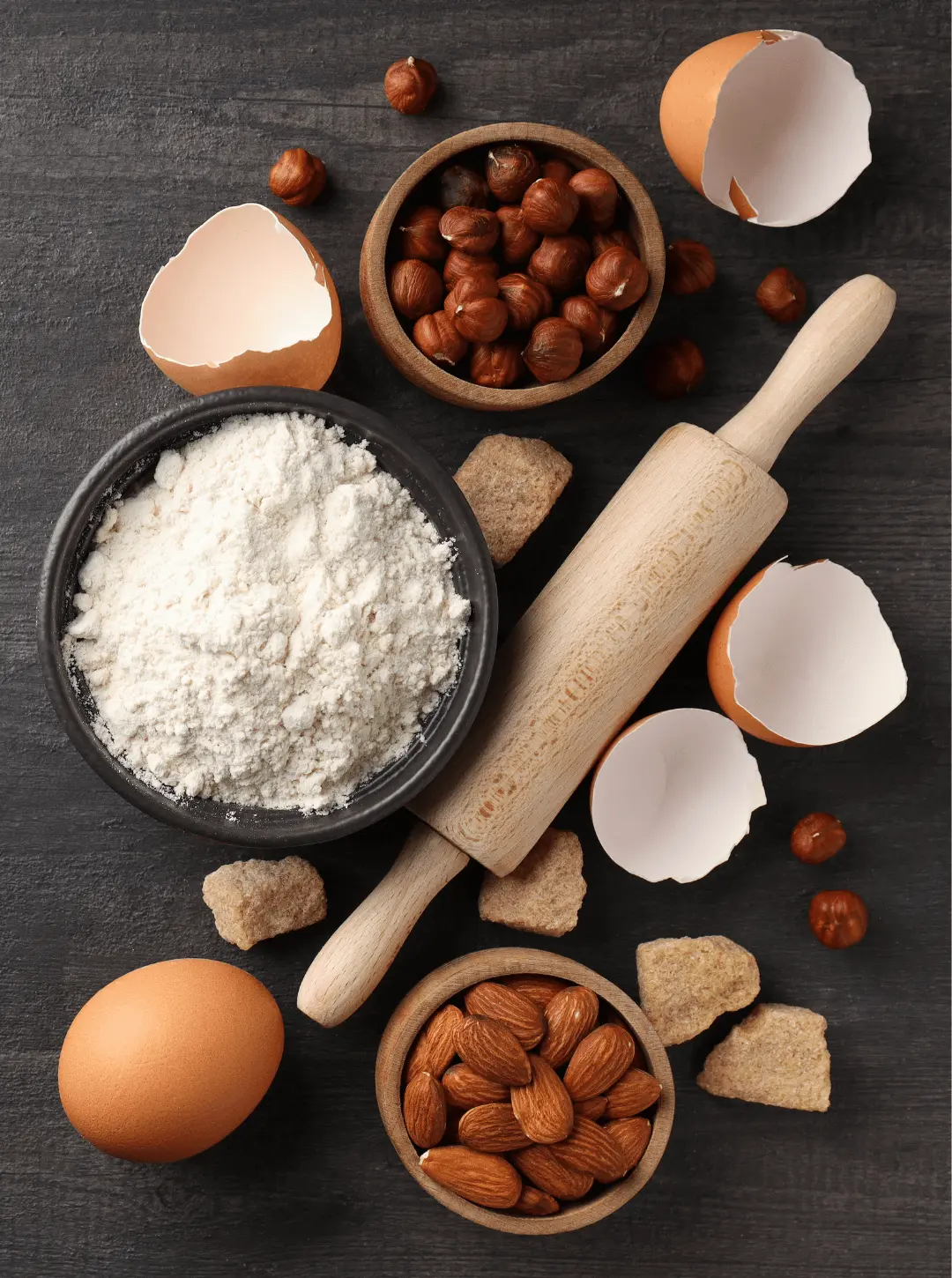
Essential Ingredients
- Almond Flour: Look for finely ground, blanched almond flour for a smooth texture.
- Cocoa powder: Unsweetened cocoa or cocoa powder raises the profile of chocolate.
- Sweetener: Options include coconut sugar, maple syrup, or low-carb sweeteners like erythritol.
- Eggs: Help bind the ingredients and provide structure.
- Fat: Butter, coconut oil, or avocado oil keeps brownies moist.
- Chocolate Chips: Optional, but a must for extra gooeyness.
Substitute Options
- Replace butter with coconut oil for a dairy-free version.
- Use flaxseed or chia eggs for a vegan adaptation.
- Swap cocoa powder with carob powder for a caffeine-free option.
Tips for Selecting High-Quality Almond Flour Brownie Recipe
- Choose almond flour labeled as “superfine” for smooth, lump-free batter.
- Avoid almond meal, as its coarse texture may result in grainy brownies.
- Store almond flour in a cool, dry place to prevent rancidity.
Step-by-Step for Almond Flour Brownie Recipe
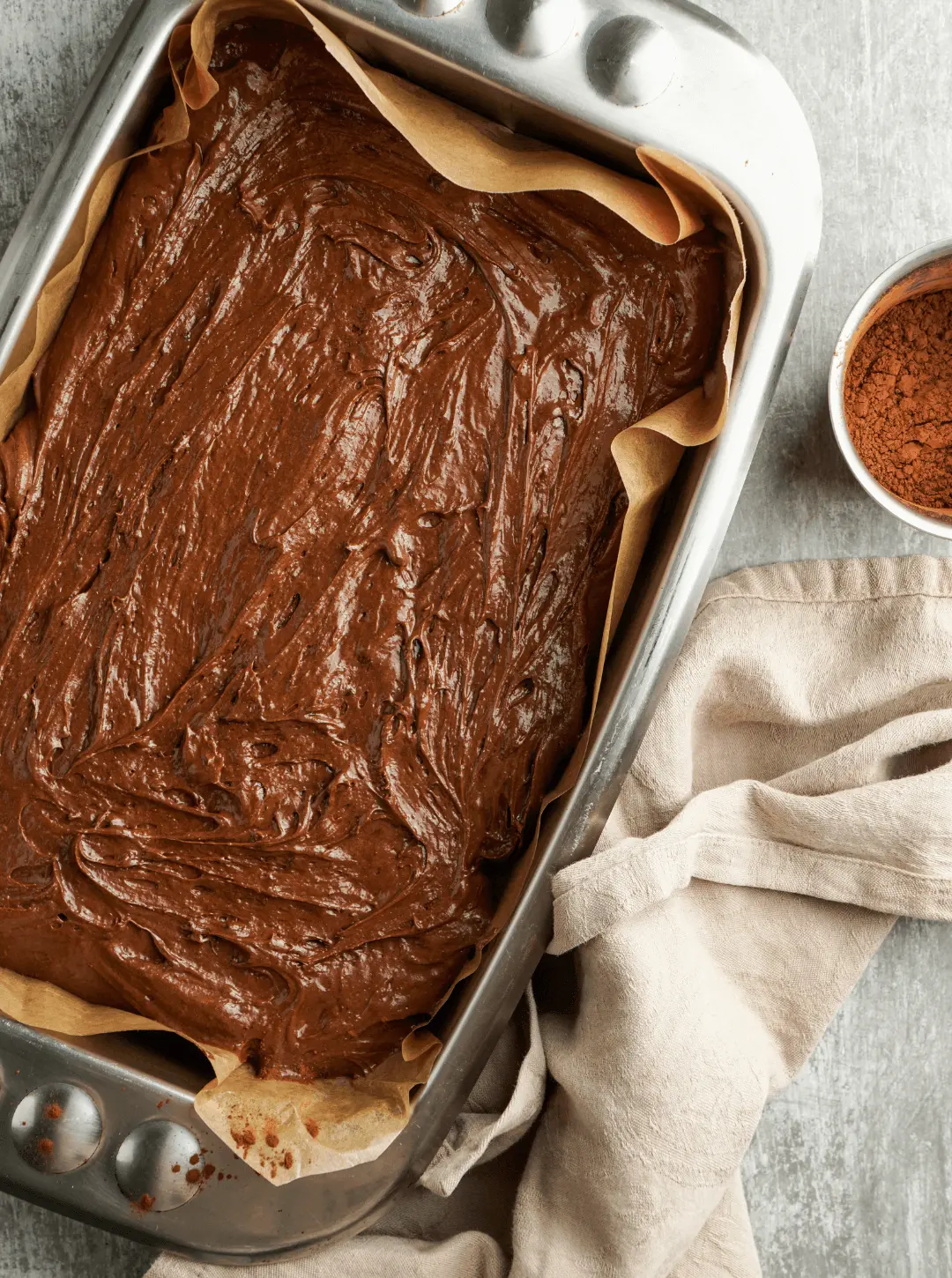
Detailed Preparation Steps
- Preheat Oven: Set to 350°F (175°C) and line a baking dish with parchment paper.
- Mix Dry Ingredients: Combine almond flour, cocoa powder, and a pinch of salt.
- Cream Wet Ingredients: Beat eggs, sweetener, and melted butter until smooth.
- Combine: Gradually add the dry ingredients to the wet mixture, folding until just combined.
- Fold in Add-ins: Stir in chocolate chips or nuts if desired.
- Bake: Pour into the prepared pan and bake for 20-25 minutes.
Baking Tips for Perfect Texture
- Avoid overmixing to maintain a tender crumb.
- Check doneness with a toothpick—it should come out with a few moist crumbs for fudgy brownies.
Common Mistakes to Avoid
- Use coarse almond meal instead of fine almond flour.
- Overbaking, which can dry out the brownies.
- Skipping the parchment paper, making brownies harder to remove.
Comparing Almond Flour with Traditional Flour
Differences in Texture
Almond flour creates a denser, moist texture compared to the airy crumb of wheat-based brownies.
Impact on Flavor
Its mild nuttiness complements the chocolate, adding depth without overpowering the recipe.
Health Benefits Comparison
Almond flour is higher in protein, healthy fats, and fiber while being naturally gluten-free and lower in carbs.
Secrets to Moist and Fudgy Brownies
Importance of Ratios
Maintaining the right balance between dry and wet ingredients helps achieve the perfect fudgy texture.
Role of Fats and Sweeteners
Healthy fats like butter or coconut oil and liquid sweeteners contribute to moisture and richness.
Baking Temperature Tricks
Bake at a moderate temperature (around 350°F) and avoid overbaking to lock in moisture.
How to Customize Almond Flour Brownie Recipe
Adding Nuts, Fruits, or Chocolate
Mix in chopped walnuts, pecans, or dried fruits for texture and flavor. Experiment with white or dark chocolate chunks for variety.
Sweetener Options for Different Diets
- Use maple syrup or honey for natural sweetness.
- Opt for stevia or monk fruit for keto-friendly brownies.
Dairy-Free and Vegan Adaptations
Replace butter with coconut oil and eggs with flaxseed meal or chia gel.
Storage and Shelf Life
Best Practices for Storage
Store brownies in an airtight container at room temperature for up to 3 days or in the fridge for a week.
Freezing Tips for Longer Shelf Life
Wrap individual brownies in plastic wrap, then place them in a freezer-safe bag. Freeze for up to 3 months. Thaw at room temperature before serving.
Common Issues About Almond Flour Brownie Recipe and How to Fix Them?
Troubleshooting Dry Brownies
- Cause: Overbaking or not enough fat in the recipe.
- Fix: Reduce baking time by 2-3 minutes. Ma sufficient fats like butter or oil are used, and consider adding a tablespoon of milk or cream to the batter.
Handling Crumbly Textures
- Cause: Incorrect almond flour texture (e.g., almond meal) or too little binding agent.
- Fix: Use super-fine almond flour and add an extra egg or tablespoon of flaxseed meal for better binding.
Adjusting for Altitude or Humidity
- High Altitude: Decrease baking temperature by 25°F and add a teaspoon of additional liquid to the batter.
- High Humidity: Store almond flour in a dry, cool place to prevent clumping and guarantee consistent measurement.
Almond Flour and Keto-Friendly Brownies
Keto Adaptation of the Recipe
Replace regular sweeteners with low-carb options like erythritol, monk fruit, or allulose. Use dark chocolate chips with at least 70% cacao to keep carbs low.
Low-Carb Sweeteners to Use
- Granulated: Erythritol, monk fruit blends, or xylitol.
- Liquid: Stevia drops or monk fruit syrup.
Balancing Macros in the Recipe
For a keto-friendly version, calculate the ratio of fat, protein, and carbs. Add coconut oil or extra butter for more fat and reduce carb-heavy ingredients.
Serving Suggestions for Almond Flour Brownie Recipe
Pairing Brownies with Toppings
- Classic: Serve warm with a scoop of keto-friendly vanilla ice cream.
- Elegant: Dust with cocoa powder or drizzle with melted dark chocolate.
- Festive: Add a dollop of whipped cream and sprinkle crushed nuts or freeze-dried berries.
Creative Plating Ideas
- Stack brownies with alternating layers of whipped cream or mousse for a parfait.
- Cut brownies into bite-sized cubes and serve on skewers with fruit.
- Use cookie cutters to shape brownies into hearts or stars for themed occasions.
Serving for Special Occasions
Dress up the brownies with gold or silver edible glitter or top them with a chocolate ganache for a luxurious touch.
FAQs About almond flour brownie recipe
Nutritional Facts
Almond flour brownies are higher in protein and healthy fats than traditional brownies. They’re naturally gluten-free and have a lower glycemic index.
Can the Almond Flour Brownie Recipe Be Frozen?
Yes! Wrap them tightly in plastic wrap, then place them in a freezer-safe container. They can be stored for up to 3 months.
Differences Between Almond Flour and Almond Meal
Almond Flour: Made from blanched almonds, finely ground for a smooth texture.
Almond Meal: Made from raw almonds, coarser with bits of skin, resulting in denser baked goods.
Is the Almond Flour Brownie Recipe Expensive?
While almond flour is pricier than traditional flours, its nutrient density and versatility justify the cost. Buying in bulk or online can help reduce costs.
How Does It Affect Texture Compared to Wheat Flour?
Almond flour produces a denser, moister texture and a slightly nutty flavor, while wheat flour creates a lighter, more crumbly structure.
is Almond Flour Brownies Recipe Suitable for Children?
Yes, almond flour brownies are a nutritious treat for children, offering healthy fats and protein. Opt for natural sweeteners and minimize added sugar for a kid-friendly version.
Can I use almond flour instead of all-purpose flour for brownies?
Yes, you can use almond flour instead of all-purpose flour, but it requires adjustments. Almond flour lacks gluten, which provides structure in traditional flours. Therefore, brownies made with almond flour will be denser and more moister. You may also need to adjust the liquid content or binding agents to make the dough hold together properly.
What is the trick to baking with an almond flour brownie recipe?
Use the Right Type: Opt for finely ground, blanched almond flour for smoother textures. Avoid almond meal, which can make baked goods grainy.
Adjust Liquids: Almond flour absorbs less liquid than all-purpose flour, so recipes may need slightly reduced wet ingredients.
Use Binding Agents: Since almond flour lacks gluten, consider adding eggs, flaxseed meal, or xanthan gum to help bind the batter.
Don’t Overbake: Almond flour bakes faster and retains moisture. Check for doneness early to prevent dryness.
What happens if you use almond flour instead of all-purpose?
Replacing all-purpose flour with almond flour changes the texture and density of baked goods:
Texture: Results are denser, moist, and slightly crumbly due to the lack of gluten.
Flavor: Adds a mild nutty flavor that complements sweet recipes like brownies.
Baking Properties: Without gluten, baked goods don’t rise as much and may spread more. You may need to adjust leavening agents.
Does almond flour affect baking time?
Yes, almond flour can affect baking time. Since almond flour retains more moisture and browns faster, baked goods may cook quicker than with all-purpose flour. Check for doneness 5-10 minutes earlier than the recipe suggests, especially for items like brownies or cookies.
What is the downside of almond flour?
While almond flour offers many benefits, there are some downsides:
Cost: Almond flour is more expensive than traditional flour.
Caloric Content: It’s higher in calories due to its fat content, which may be a concern for some.
Texture: Without gluten, it may result in denser or crumbly baked goods.
Allergen Sensitivity: Unsuitable for those with nut allergies.
How much almond flour equals 1 cup of all-purpose flour?
Almond flour cannot be substituted 1:1 for all-purpose flour due to its different density and lack of gluten. Typically, you’ll need about 1 1/4 cups of almond flour to replace 1 cup of all-purpose flour. You may also need to increase binding agents or reduce liquids to achieve the desired consistency.
What is the healthiest flour?
The healthiest flour depends on your dietary needs:
Almond flour: It is high in protein, has healthy fats, and is low in carbs; it is excellent for keto and gluten-free diets.
Coconut Flour: Low in carbs and high in fiber but highly absorbent, requiring recipe adjustments.
Whole Wheat Flour: High in fiber and nutrients but contains gluten.
Oat flour: It is rich in fiber and slightly sweet, which is great for heart health.
For overall balance, almond flour stands out for its nutrient density and low glycemic index.
What is a good binding agent for Almond Flour brownie recipe?
Since almond flour lacks gluten, good binding agents include:
Eggs: Ideal for most baked goods to provide structure.
Flaxseed or Chia Seeds: Mix with water to form a gel-like consistency for vegan options.
Xanthan Gum: A small amount can mimic gluten’s elasticity in gluten-free recipes.
Psyllium Husk: Helps retain moisture and bind ingredients in low-carb recipes.
Is almond flour healthier than wheat flour?
Yes, almond flour is considered healthier for many reasons:
Nutrients: Almond flour is rich in vitamin E, magnesium, and healthy fats, while wheat flour has fewer micronutrients.
Glycemic Index: Almond flour has a low glycemic index, making it better for managing blood sugar levels.
Gluten-Free: Suitable for those with gluten sensitivity or celiac disease.
However, almond flour has higher calories and fat, so portion control is key. Almond flour is the better choice for individuals focused on low-carb or nutrient-dense options.
Benefits of Making Homemade Almond Flour Brownie Recipe
Cost-Effectiveness
Homemade brownies are typically more affordable than store-bought gluten-free options and allow you to make larger batches.
Control Over Ingredients
You can avoid preservatives and artificial flavors by using wholesome, high-quality ingredients.
Freshness and Customization
Freshly baked brownies always taste better, and you can tweak the recipe to suit dietary preferences or add creative flavors.
Conclusion and Final Tips for Almond Flour Brownie Recipe
Recap of Key Steps
- Use superfine almond flour for the best texture.
- Maintain a proper ratio of wet and dry ingredients.
- Don’t overbake; aim for a slightly underdone center for fudgy brownies.
Encouragement to Experiment
Feel free to personalize your brownies with your favorite mix-ins, toppings, or dietary adaptations. Almond flour is versatile and forgiving for creative bakers.
Final Storage and Serving Tips
- Store leftovers in an airtight container at room temperature or in the fridge for a week.
- For longer storage, freeze brownies individually wrapped to enjoy a quick treat anytime.
Happy baking!
Stay Connected for More Delicious Recipes!
Love trying new and exciting recipes? Don’t miss out! Follow me for daily kitchen inspiration, exclusive cooking tips, and mouthwatering food ideas.
🔹 Facebook: Follow me here
🔹 Instagram: Join me here
🔹 Pinterest: Join me here
Let’s turn every meal into a masterpiece—one recipe at a time! Tag me when you try my dishes, and share your creations. Happy cooking! 🍓🔥 #PanoramaRecipes
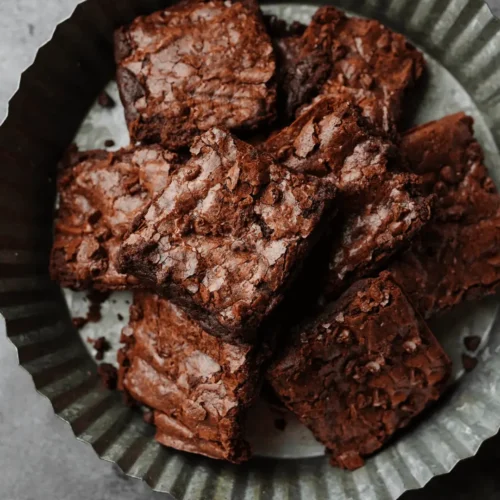
Almond Flour Brownie Recipe
Equipment
- 8×8-inch baking pan
- Mixing bowls
- Whisk
- Spatula
- Measuring cups and spoons
- Parchment paper
- Toothpick (for testing doneness
- Oven
Ingredients
- 1 cup almond flour superfine, blanched
- 1/2 cup unsweetened cocoa powder
- 1/4 tsp sea salt
- 3 large eggs
- 1/2 cup coconut sugar or sweetener of choice
- 1/3 cup melted butter or coconut oil for dairy-free
- 1 tsp vanilla extract
- 1/2 cup dark chocolate chips optional
Instructions
- Preheat your oven to 350°F (175°C) and line an 8×8-inch baking pan with parchment paper.
- In a medium bowl, whisk together almond flour, cocoa powder, and sea salt until evenly combined.
- In a separate large bowl, beat the eggs, coconut sugar, melted butter, and vanilla extract until smooth.
- Gradually fold the dry ingredients into the wet mixture until just combined—do not overmix.
- Stir in chocolate chips if using.
- Pour the batter into the prepared pan and spread it evenly.
- Bake for 20–25 minutes, or until a toothpick inserted in the center comes out with a few moist crumbs.
- Let brownies cool in the pan before slicing and serving.

